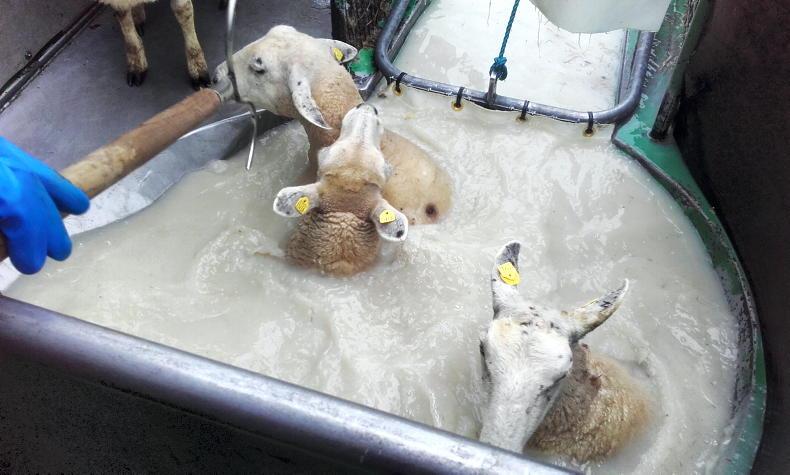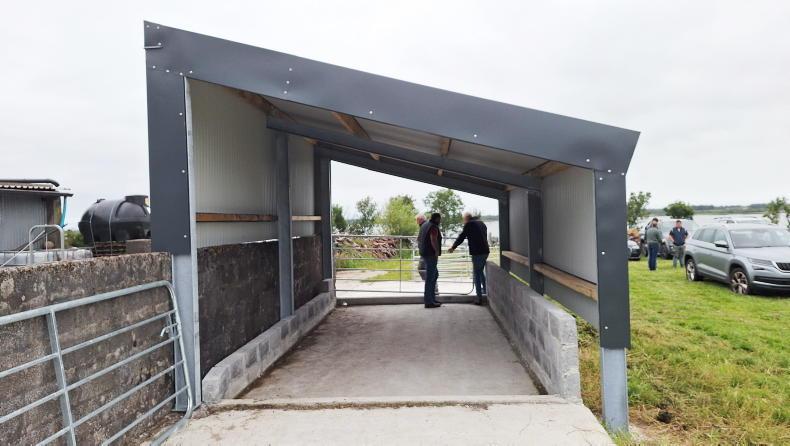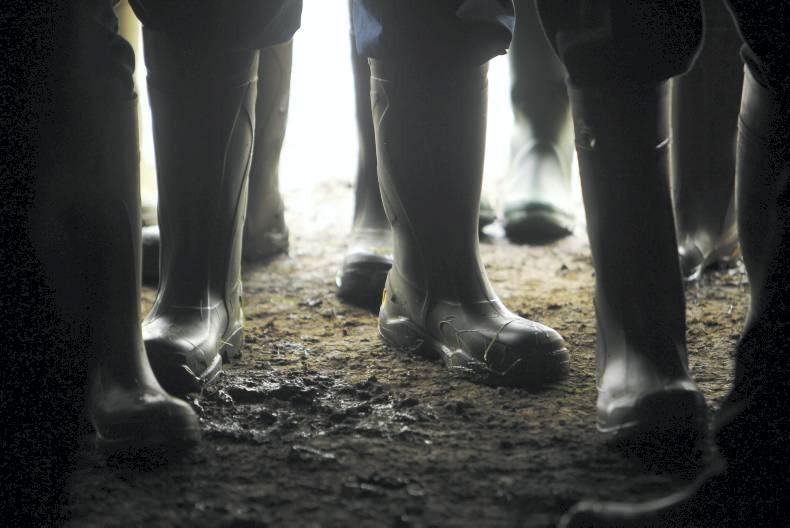A paddock or rotational grazing system is central to maximising grass growth and achieving high levels of grass utilisation. Programmes such as the Teagasc/Irish Farmers Journal BETTER farm beef programme and the Beef Technology Adoption Programme (BTAP) have helped in demonstrating the merits of such a system and also in displaying the range of fencing options available.
Irrespective of the grazing option selected (paddock, strip grazing or block grazing), there are a number of recommendations common to all systems, as listed below.
Number of divisions
A rotational grazing system should have a minimum of five to six divisions and ideally have seven to eight divisions per grazing group on the farm. These divisions do not need to be permanent; temporary divisions will suffice.
The reason behind the recommendation is to provide an opportunity to graze out paddocks quickly (ideally two to three days) and thereby avoiding a situation where grass regrowth is continually being regrazed.
Similarly, if animals are moving through the grazing rotation too fast, grass growth will be decreased, with a higher risk of a grass deficit occurring.
In periods of peak growth, having multiple divisions per grazing group will allow surplus grass to be taken out of the rotation as baled silage, while still leaving adequate paddocks to operate a grazing rotation.
Table 2 details grazing targets during the main summer grazing season.

Paddock division/size
Where possible, paddocks should be laid out in equal-sized divisions. Avoid long or narrow divisions, as these will be more prone to sward damage during periods of inclement weather.
Three of the most common methods of field division are strip grazing, block grazing and spokes of a wheel, as shown in Figure 1.

Some farmers operate a strip-grazing system simply, via flexible use of three temporary strip wires.
Once the first paddock has been set up, a temporary fence is erected to set up the next grazing area. When animals move into the area, the fence no longer in use is taken down and erected ahead of animals, with the previously erected fence acting as a back fence.
The spokes of a wheel method works well where there is only one access point to water or where cows and calves need to be herded regularly into a pen for AI, for example.
Target the size of the paddock to the likely grazing group. For example, the ideal size paddock for a 40-cow suckler herd is about 2ha.
Temporary electric divisions work best in large paddocks that double up for harvesting silage. These paddocks can be divided to achieve four or five grazings in spring and two to three in autumn when grass growth is slower.
Water supply
Water supply, and more importantly its location, is essential in operating a rotational grazing system. Placing water troughs in the middle of fields, as opposed to field perimeters, allows more paddocks to be implemented permanently or temporarily.
Many of the Teagasc/Irish Farmers Journal BETTER farm participants are operating a percentage of their farm with a temporary or flexible piped water and trough system, whereby water piping is run on top of the ground (usually along the wire fence to prevent movement by cattle) and connected to a moveable trough to service a number of paddocks.
Figure 1 above, taken from Grazing Guide, demonstrates how troughs can be set up in rotational or block grazing systems to facilitate temporary paddock divisions.
Take care to match the size of piping/trough to water pressure to ensure water flow adequately meets stock demand.
A permanent field perimeter fence that incorporates a strand of electric wire makes tapping into a power supply with temporary fencing much easier. Where a large area is being divided, erecting a few permanent timber posts or stakes in key positions, or a main fence down the centre of the field, will give greater stability to temporary fences.Permanent posts placed either side of plastic water troughs will give greater stability and are vital where grazing with young bulls. Using poly wire with a standard or geared reel and pig-tail or plastic posts will allow the fastest setup time of temporary fences.Do not graze young bulls in paddocks in sight of heifers or cows and calves. Raising a wire with creep posts will allow calves to creep graze forward. Beware if grazing calves on a forage crop over the winter months as calves will become accustomed to going under the wire fence. A creep gate facility may be more useful in this situation.Cut-out switches can be used successfully where blocks of land are separated into a number of grazing groups. These will only cut power to the area where fences are being moved, reducing the risk of other animal groups breaking through. Where possible, setting up paddocks with access to shelter will benefit grazing cows with young calves during inclement weather. Cost of dividing paddocks for grazing

Option 1A: Block grazing
This is probably the best way to split a field from a management viewpoint, as each 2.5ac division is equal in size and ideal for working in. By placing the drinker in the middle of the field, it can be used for each division. The downside to this is the possibility of excess tramping around the trough. Table 1 lists the costs of splitting the field using temporary electric fence, reels and plastic stakes. The total cost amounts to €335 including additional Hydrodare pipe to move the drinker. Also costed are two geared electric fence reels at €45 each, including VAT. Cheaper versions can be used to further reduce costs.
Option 1B: Permanent block grazing
As per Option 1A, the field is divided into four, but this time using timber stakes and high tensile electric wire. The cost increases by €160 as a result.
Option 2: Strip grazing
The second scenario is where the field is divided horizontally into four different sections. The water pipe is extended from the main drinker and two additional drinkers are required.
This is the most expensive option, due primarily to the additional drinkers.
Another option in this scenario is to extend the pipe and use the existing moveable drinker as it is needed – this will save €140 in drinkers, but will significantly increase the labour involved.
Again, savings can be made through the use of cheaper reels. This could take about €70 off the cost.
Option 3: Spokes of a wheel
This is by far the cheapest option. One drinker located in the corner of the field is used as the main drinking point.
The field is divided from one corner to another and then each half is divided in two to create four sections.
The costs are kept to a minimum as no investment in drinkers is required.
The limiting factors are that there can be excessive traffic around the drinker, which may lead to poaching in poor weather. The second limitation is the odd shape of each section, which could make routine work such as fertiliser application more difficult without removing the wires.
Electric fencer
Omitted from the costs above is the electric fencer. Depending on the situation, a mains fencer or battery fencer may be required. Depending on the strength of fencer purchased, the price of this item can range from a low of €100 to upwards of €290 for battery-powered devices. Mains fencers can vary in price from €130 for a 0.7 joule model to well over €600 for a 14.8 joule fencer.
A paddock or rotational grazing system is central to maximising grass growth and achieving high levels of grass utilisation. Programmes such as the Teagasc/Irish Farmers Journal BETTER farm beef programme and the Beef Technology Adoption Programme (BTAP) have helped in demonstrating the merits of such a system and also in displaying the range of fencing options available.
Irrespective of the grazing option selected (paddock, strip grazing or block grazing), there are a number of recommendations common to all systems, as listed below.
Number of divisions
A rotational grazing system should have a minimum of five to six divisions and ideally have seven to eight divisions per grazing group on the farm. These divisions do not need to be permanent; temporary divisions will suffice.
The reason behind the recommendation is to provide an opportunity to graze out paddocks quickly (ideally two to three days) and thereby avoiding a situation where grass regrowth is continually being regrazed.
Similarly, if animals are moving through the grazing rotation too fast, grass growth will be decreased, with a higher risk of a grass deficit occurring.
In periods of peak growth, having multiple divisions per grazing group will allow surplus grass to be taken out of the rotation as baled silage, while still leaving adequate paddocks to operate a grazing rotation.
Table 2 details grazing targets during the main summer grazing season.

Paddock division/size
Where possible, paddocks should be laid out in equal-sized divisions. Avoid long or narrow divisions, as these will be more prone to sward damage during periods of inclement weather.
Three of the most common methods of field division are strip grazing, block grazing and spokes of a wheel, as shown in Figure 1.

Some farmers operate a strip-grazing system simply, via flexible use of three temporary strip wires.
Once the first paddock has been set up, a temporary fence is erected to set up the next grazing area. When animals move into the area, the fence no longer in use is taken down and erected ahead of animals, with the previously erected fence acting as a back fence.
The spokes of a wheel method works well where there is only one access point to water or where cows and calves need to be herded regularly into a pen for AI, for example.
Target the size of the paddock to the likely grazing group. For example, the ideal size paddock for a 40-cow suckler herd is about 2ha.
Temporary electric divisions work best in large paddocks that double up for harvesting silage. These paddocks can be divided to achieve four or five grazings in spring and two to three in autumn when grass growth is slower.
Water supply
Water supply, and more importantly its location, is essential in operating a rotational grazing system. Placing water troughs in the middle of fields, as opposed to field perimeters, allows more paddocks to be implemented permanently or temporarily.
Many of the Teagasc/Irish Farmers Journal BETTER farm participants are operating a percentage of their farm with a temporary or flexible piped water and trough system, whereby water piping is run on top of the ground (usually along the wire fence to prevent movement by cattle) and connected to a moveable trough to service a number of paddocks.
Figure 1 above, taken from Grazing Guide, demonstrates how troughs can be set up in rotational or block grazing systems to facilitate temporary paddock divisions.
Take care to match the size of piping/trough to water pressure to ensure water flow adequately meets stock demand.
A permanent field perimeter fence that incorporates a strand of electric wire makes tapping into a power supply with temporary fencing much easier. Where a large area is being divided, erecting a few permanent timber posts or stakes in key positions, or a main fence down the centre of the field, will give greater stability to temporary fences.Permanent posts placed either side of plastic water troughs will give greater stability and are vital where grazing with young bulls. Using poly wire with a standard or geared reel and pig-tail or plastic posts will allow the fastest setup time of temporary fences.Do not graze young bulls in paddocks in sight of heifers or cows and calves. Raising a wire with creep posts will allow calves to creep graze forward. Beware if grazing calves on a forage crop over the winter months as calves will become accustomed to going under the wire fence. A creep gate facility may be more useful in this situation.Cut-out switches can be used successfully where blocks of land are separated into a number of grazing groups. These will only cut power to the area where fences are being moved, reducing the risk of other animal groups breaking through. Where possible, setting up paddocks with access to shelter will benefit grazing cows with young calves during inclement weather. Cost of dividing paddocks for grazing

Option 1A: Block grazing
This is probably the best way to split a field from a management viewpoint, as each 2.5ac division is equal in size and ideal for working in. By placing the drinker in the middle of the field, it can be used for each division. The downside to this is the possibility of excess tramping around the trough. Table 1 lists the costs of splitting the field using temporary electric fence, reels and plastic stakes. The total cost amounts to €335 including additional Hydrodare pipe to move the drinker. Also costed are two geared electric fence reels at €45 each, including VAT. Cheaper versions can be used to further reduce costs.
Option 1B: Permanent block grazing
As per Option 1A, the field is divided into four, but this time using timber stakes and high tensile electric wire. The cost increases by €160 as a result.
Option 2: Strip grazing
The second scenario is where the field is divided horizontally into four different sections. The water pipe is extended from the main drinker and two additional drinkers are required.
This is the most expensive option, due primarily to the additional drinkers.
Another option in this scenario is to extend the pipe and use the existing moveable drinker as it is needed – this will save €140 in drinkers, but will significantly increase the labour involved.
Again, savings can be made through the use of cheaper reels. This could take about €70 off the cost.
Option 3: Spokes of a wheel
This is by far the cheapest option. One drinker located in the corner of the field is used as the main drinking point.
The field is divided from one corner to another and then each half is divided in two to create four sections.
The costs are kept to a minimum as no investment in drinkers is required.
The limiting factors are that there can be excessive traffic around the drinker, which may lead to poaching in poor weather. The second limitation is the odd shape of each section, which could make routine work such as fertiliser application more difficult without removing the wires.
Electric fencer
Omitted from the costs above is the electric fencer. Depending on the situation, a mains fencer or battery fencer may be required. Depending on the strength of fencer purchased, the price of this item can range from a low of €100 to upwards of €290 for battery-powered devices. Mains fencers can vary in price from €130 for a 0.7 joule model to well over €600 for a 14.8 joule fencer.














SHARING OPTIONS